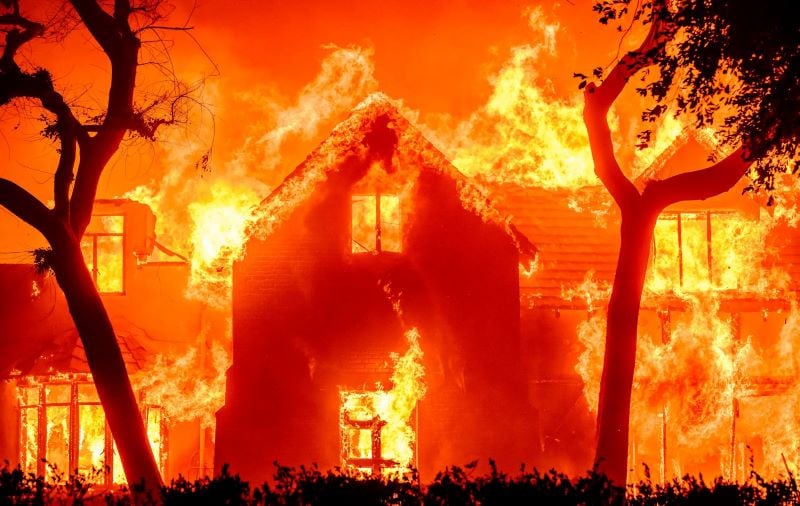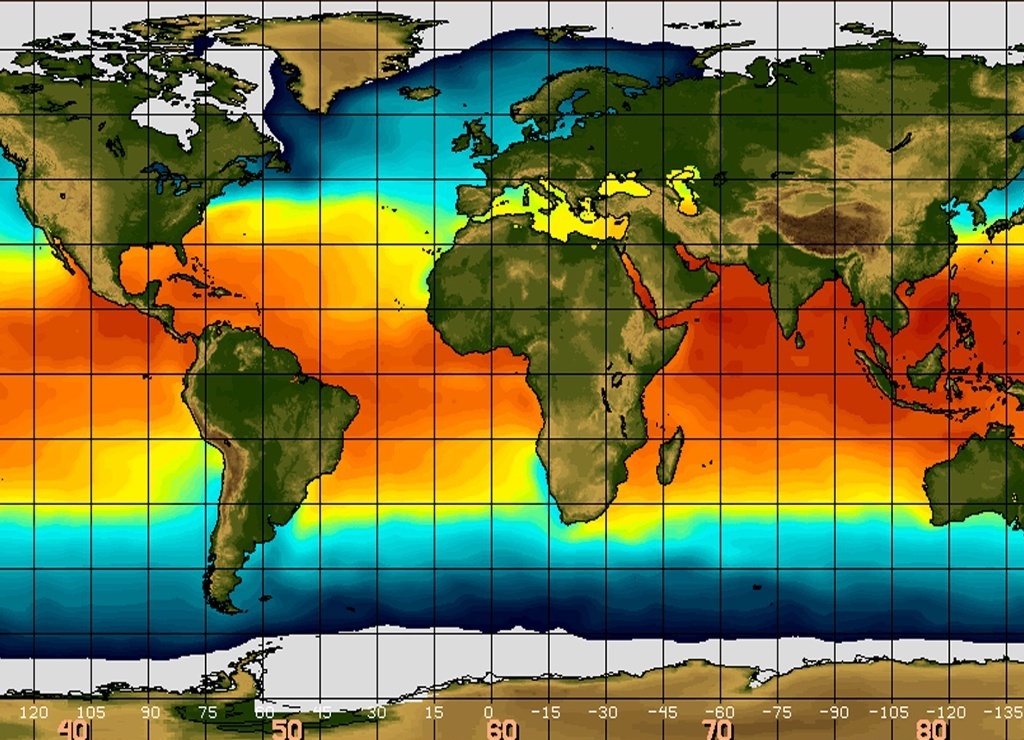El Nino, Global Warming: South India may be hit by early and intense heatwaves
Early and intense heatwaves may hit the southern part of the county as it falls in the region under combined impact of heightened temperatures exacerbated by global warming and ongoing El Nino in the Pacific Ocean
By Editorial Team / Feb 26, 2024

Image Courtesy: Times Now
Early and intense heatwaves may hit the southern part of the county as it falls in the region under combined impact of heightened temperatures exacerbated by global warming and ongoing El Nino conditions in the equatorial Pacific Ocean, the DTE reported. The report said parts of Africa, southeast Asia, central America, Europe and Asia are also witnessing a rise in temperatures, with some even undergoing heatwaves much earlier than normal.
The outlet reported that in southern India maximum temperatures are 4-8 degrees Celsius above normal, the worst affected areas are in western and central Maharashtra, Rayalaseema in Andhra Pradesh and northern Karnataka, according to India Meteorological Department (IMD) data for February 10 and 11, respectively. While the heat is rising in southern parts of the country, north India continues to experience below-average temperatures and even coldwaves in some areas — a trend that began in January, DTE report said.
As ice melts polar bears face food scarcity, starvation threat: Study
According to a new study some polar bears are facing starvation as melting sea ice is forcing them to live on land, where they are unable to adapt their diets. The iconic Arctic species mostly eat ringed seals that they catch on ice floes offshore. But as the ice disappears in a warming world, many bears are spending greater amounts of time on shore, eating bird’s eggs, berries and grass. However the animals rapidly lose weight on land, increasing the risk of death, reported the BBC. The fall in bear population since the 1980s was mainly due to hunting, the report says adding: “With greater legal protection, polar bear numbers have risen. But increasing global temperatures are now seen as their biggest threat. That’s because the frozen Arctic seas are key to their survival. The animals use the sea ice as a platform to hunt ringed seals, which have high concentrations of fat, mostly in late spring and early summer. But during the warmer months many parts of the Arctic are now increasingly ice-free.
According to the NYT the researchers fitted 20 bears with video-camera collars in Manitoba, Canada, which is below the Arctic Circle at the southern end of the animals’ range, in order to study their hunting behaviour. It says: “Nearly all the bears followed in the new study lost weight, and two individuals were on track to starve before the sea ice returned.”
Ocean currents regulating Earth’s climate ‘on course to a tipping point’
The Atlantic Meridional Overturning Circulation (AMOC), a large system of ocean currents that helps keep temperatures in western Europe milder, “may already be on course to a tipping point”, according to a study covered by Independent and many other outlets. The AMOC plays a key role in regulating Earth’s climate by transporting heat from the Equator towards the poles. But as global temperatures rise due to warming, freshwater is pouring into the system from the melting ice from Antarctica, Greenland and other sources, risking disruption to the circulation patterns that drive the AMOC. While current observational records are too short to make a reliable estimation, there are early warning indicators suggesting ‘we are moving in the direction of the tipping point, researchers said. Once the Atlantic Ocean circulation collapses, the resulting climate impacts are nearly irreversible on human timescales, researchers warned. An abrupt shutdown of Atlantic Ocean currents that could put large parts of Europe in a deep freeze and other regions experiencing accelerated warming and altered precipitation patterns. is looking a bit more likely and closer than before as a new complex computer simulation finds a ‘cliff-like’ tipping point looming in the future, AP reported.
the Atlantic meridional overturning circulation (AMOC), ocean currents key for global climate regulation. is already on track towards an abrupt shift researches alerted about impending breakdown using computer models and past data They found AMOC is already on track towards an abrupt shift, the Guardian reported.
Snowless December, Jan may lead to extreme heat in March and April in north India?
Vanishing snow accompanied by rain in western Himalayas in the peak winter (December 2023 and January 2024) will result in heat waves in March and April and heavy rainfall in the pre-monsoon season over northwest India, experts have told Down To Earth (DTE). As a result Rabi crops will deplete further in the region that is already grappling with low production since the past few years leading to food insecurity.
DTE reported that from January 1 to January 23, six states in northwest India have received no rainfall. Himachal and Uttarakhand received 99% less rain than normal, and the rest have also received next to no rain. Rajasthan has recorded a rainfall deficit of 88% and Uttar Pradesh of 73%, DTE reported. According to the India Meteorological Department (IMD) a lack of active western disturbances have resulted in the extreme lack of precipitation (80% less than normal for December) in the Western Himalayan region.
Himalayan treelines might be climbing higher in response to climate change
Mountain ranges across the world are experiencing a warming climate which is pushing tree lines further north. According to a new study of the Trans-Himalayan region in Nepal and Hengduan Mountains in China, the former is experiencing rapid shifts in treeline, with younger trees growing further up the mountains, reported Mongabay adding that changes in treeline elevation may disrupt the delicate balance of the hydrological cycle, affecting water availability downstream as snow and ice melt patterns change, the researchers said.
Mongabay quoted studies showing that in the Himalayan region, temperatures are rising more than the global average, with fewer cold days and more warm days, making ecosystems there vulnerable to climate change. These mountain environments, characterised by low temperatures at higher elevations, create limitations on tree growth. However, the intricate interplay between temperature and water availability, driven by precipitation gradients, means that predicting treeline shifts based solely on temperature changes is overly simplistic and may not fully reflect the complex reality.
Above normal temperatures forecast for India’s wheat areas
India’s major wheat-growing areas in the north, as well as other parts of the country, could experience above normal temperatures in February which may reduce yield , the India Meteorological Department (IMD) warned. This may force India to import wheat to keep the prices stable which so far the government has resisted as it would irk farmers ahead of a general election, expected by April, Reuters reported.
Monthly maximum temperatures for February are likely to be above normal over most parts of northwestern India, IMD office said adding that temperatures are also likely to be above normal over western central India and some parts of eastern central India, he said.
No consensus over timeline of release of influential climate science reports at IPCC talks
During IPCC talks in January in Istanbul, countries were divided over when to all the UN to release their highly anticipated and influential scientific reports assessing the state of climate change by the United Nations’ Intergovernmental Panel on Climate Change (IPCC). Saudi Arabia, India and China were opposed to the proposed dates when the scientific body would provide its assessment for the next global stocktake, the UN’s scorecard of collective climate action, due in 2028, according to sources reported by Climate Home News which added that the developing countries argued the accelerated programme would force to complete the scientific process “in a hurry” and would not leave enough time for developing countries to review the output.
The IPCC met in mid january to decide the work programme for its seventh assessment cycle, which officially started in July 2023 with the election of its new chair Jim Skea.
Ahead of the talks, the UNFCCC officially requested that the scientific body align its activities with the timeline of the next global stocktake. But sticking to a 2028 deadline would mean either fast-tracking its work or shortening the IPCC’s entire cycle from seven years down to five years. Small island nations, least developed countries and some rich countries favoured this option, Climate Home reported.
‘DR Congo floods leave more than 2 million in need of aid’
The United Nations International Children’s Emergency Fund said over 2 million people, 60 percent of them children, need humanitarian aid due to the floods in the last two months in the Democratic Republic of the Congo. People are at risk of the worst cholera outbreak in years, the UN said.
The Congo River, the world’s third largest by water discharge volume, has reached levels unseen in more than 60 years due to exceptionally intense rains in 18 of the 26 provinces of the country, the largest in sub-Saharan Africa. Rainfall has caused floods that have destroyed or damaged almost 100,000 homes, 1,325 schools and 267 health centers, the fund said in a statement.
The report said crops have failed in waterlogged fields, raising the prospect of food shortages in some places. Forecasters have warned of more rain, raising the possibility that cholera, which spreads in flooded areas, could spread from areas where it is endemic across the Congo River to the northern city of Kisangani and then to Kinshasa. Congolese capital.
WIldfires: Colombia declares a disaster, calls for international help
As forest fires spread across Colombia, the country has declared a disaster. Experts say the wildfires are the result of “hot and dry conditions linked to the El Niño weather phenomenon”, Colombian president Gustavo Petro has called for international assistance for what he has described as “climate crisis”. Colombia has put out 204 fires in January and over a dozen continue to burn. Reuters reported that, in a study earlier this week, “climate change has been blamed for driving a record drought that has hit all nine countries in the Amazon basin – including Colombia”.
The article was first publishes in CarbonCopy
Climate Change Global Warming Heatwave in India El Nino

